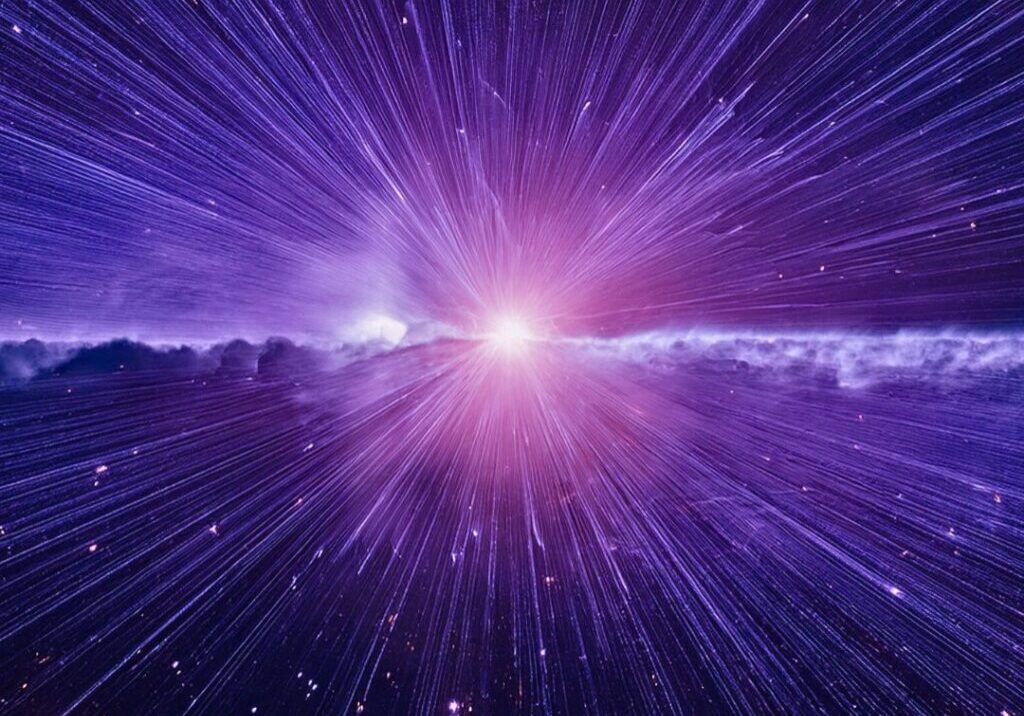The Cosmic Christ And A Technology Of Resurrection
“…the Kingdom of God is in your midst.”
– Luke 17:21
Technology is all around us.
The Internet, in just over 20 years, has radically transformed human life and culture, changing how we do business, read the news, meet friends, and even fall in love. Smartphones—putting the power of the Internet in the palms of our hands—are owned by over 1.5 billion people worldwide, projected to reach 36% of the total human population by 2018.[1] Massive scale social networks like Facebook and Twitter, with billions of users across the globe, have fundamentally changed the way we talk to and learn about each other, influencing everything from the frontlines of revolutions to the 2016 US Presidential election. Driverless cars, already on the road in the United States, will soon relieve much of the tedium of driving and even reduce traffic fatalities. Bionic lenses, available as early as this year, will cure vision problems with an eight minute out-patient surgery and provide superhuman sight three times 20/20. [2] And in France’s rustic region of Provence, drones have started delivering the daily mail.[3]
Despite the promise of modern technology, we tend to think of technology as far separated from religious life and the love of God. This is a dangerous mistake, one that separates the most transformative force of the 20th and 21st century from our home in the divine.  We have abandoned any sense of the spiritual meaning of technology and thus it should come as no surprise that so much modern tech is at odds with human flourishing, befuddling authentic awareness and separating people from each other and the world around them.
We have abandoned any sense of the spiritual meaning of technology and thus it should come as no surprise that so much modern tech is at odds with human flourishing, befuddling authentic awareness and separating people from each other and the world around them.
In our brief time here, we will explore a vision of technology as nothing less than an extension of Christ’s creative love in the cosmos. I write as both a theologian and Chief Product Officer of a software company, as an explorer of God’s revelation through religious tradition and digital code alike. After receiving an M.A. in Theology and then working in academic institutes dedicated to the religion and science dialogue, I’ve worked the past seven years on an online virtual world dedicated to altruism, optimism, and charity.
Years of both academic study and product development have led me to see that the time has come to ask new theological questions: Does God’s overabundant love shine forth through the digital as it does through the natural? Is the same grace and glory of a galloping stallion or languid snowfall to be found in virtual worlds? Do we find the divine in the 1s and 0s of modern technology? Is God in the machine? Is Christ in the code?
To answer these questions, we must return to the Beginning…
Cosmic Christ & Creative Techne
“In the beginning was the Word (Greek: Logos), and the Word was with God, and the Word was God. He was in the beginning with God. All things came into being through him, and without him not one thing came into being” (John 1:1-3 NRSV).
We often read all too quickly passed this astounding foundation of Christian faith. John reveals that Christ precedes the life of Jesus of Nazareth on Earth. This is a Cosmic Christ that was with God “in the beginning.” God’s first creation is Logos Christ, through whom God creates all things. God begets Christ, and through Christ God makes the cosmos. The cosmos partakes of God through the creative act of Christ, and it is the Logos itself by which creatures come into being, through which they become themselves in fullness, and to which they turn in praise to worship the Godhead through Christ; the cosmos is “Christiform.”
Creation, however, is not an empty act of mindless bringing-forth. It is not an “art for art’s sake.” Creation is an experience of perfect love. It was out of God’s endless, overabundant love that God brought forth creation. God creates because God is love, but moreover and more importantly for our purpose here, we must understand that God’s creation is the very love of God. Following Christ, it is the nature of the cosmos to create, to bring forth. We see that creativity is an act of love, a sharing of God’s intention for all the cosmos. A loving creativity is the way of all things.
We might best understand this creativity as techne, coming from the ancient Greek philosophical tradition as a craftsmanship or artistry. Techne is a craft-like knowing, a practical art, a working with the hands to fashion something new. We all know the love found in something finely made, and such love shines out from the cosmos, from the power of starlight to the emergence of life itself. Christic creativity is no mere abstraction. As tradition shares from Genesis 2, our God is hands-on: planting gardens, watering the ground, forming humanity from bare earth and breathing the very life into us. Jesus Christ, son of a carpenter, also often worked with his hands in the dirt, and frequently spoke of working in the natural world. The Eucharist itself is techne; as the Catholic mass says of sacramental wine: “fruit of the vine and work of human hands.”
Cyborgian Incarnation
Thinking of the Cosmic Christ’s creativity as a techne brings us to the “Cyborg Christ.” Philosopher of Science, Donna Haraway, uses the science fiction concept of the “cyborg”—a cyber-organic being, both machine and organic flesh—to show that technology is not in a separate domain of life, divorced from the areas of culture, science, or even nature itself. As she writes, “…universal nature is itself fully artefactual…nature is a technics through and through.”[4] It is not just that humanity is cyberorganic, but that nature itself is cyborg.
The cyborg makes perhaps the most sense within a Christological framework of incarnation. Christ, who is “begotten-not-made,” constructs the cosmos in Creation, and then indwells it in Incarnation—the Word becomes flesh, the begotten joins the made. In this regard, via the incarnate Christ, creation is both born-and-made. Put another way, the incarnation is the emergence of the Cyborg Christ. This means all creation is a divine artifact, all creatures are cyborgs in the image and likeness of our cyberorganic God.
The Word of God found in the cosmos at large is also present in human creativity. With humanity, Christic creation brings-forth creativity itself once again. Human techne is the first moment in the cosmos when God’s creation is able to create for itself. In human techne, creation is self-aware, becomes aware of its ability—its calling—to create. In answering that call, in being as individual selves the creativity that flows through the universe, humanity is able to create at an exponential rate and in a steadily compounding fashion never seen before in the sweeping history of the cosmos.
Human techne brings us to modern technology. From an incarnational point of view, technology has the same relationship to humanity as creators, as the cosmos does to Christ. Technology is our created world, the technical reality that we imbue with meaning and purpose through our unique participation in Christ’s cosmic creation. Every piece of technology—every techne—partakes in the same Christic creativity and incarnation as the rest of the cosmos. A cyborgian theology understands that God is in the machine as much as God is in the lily or lotus flower. In a very real and profound sense, technology is the flesh of human creativity.
iPhones & Resurrection
The human creativity that is technology can take sinful and graceful forms. If technology leads us away from our encounter with God through creation and each other, then that technology is sinful. As Sister Ilia Delio points out, when the “‘I-Thou’ relationship has mutated into an ‘I-phone’ relationship,”[5] we have a problem. She writes: “The human person, wedded to the artificial screen, is caught between care for the earth and flight from the world.”[6] Technology that is sinful takes us away from the world, in effect rejecting the incarnation as the material reality of God’s creation. Sinful technology is, in this way, anti-Christian, because it rejects incarnation, the most basic belief of Christian faith.
Our technology needs a resurrection. We have to allow our technology to participate in the same resurrectional reality that Christ inaugurated on the Cross. Part of allowing technology to participate in resurrection—and be graceful rather than sinful—is no longer creating a dualism that separates technology from creation. Resurrection is cyberorganic, but we ourselves thwart technology’s place in the cosmic order by divorcing it from God’s created reality. We must craft technology that, in Delio’s words, seeks to “deepen the heart of love,”[7] releasing it to more fully participate in the fullness of God’s creation.
Raimon Panikkar reminds us that incarnation and resurrection are an on-going part of the creatio continua. He writes: “the coming Christ, the Parousia Christ, is not separable from the eucharistic and risen Christ. So the eschatological ‘Second Coming’ is not another Incarnation or a second Christ appearing here or there.”[8] Christ has already come as a human being, died, and was resurrected. Incarnation and resurrection are woven into the very nature of the cosmos and do not need to be re-incorporated. Therefore, we ask in what form will Christ come again…
Perhaps we may even ask whether we can view a possible Parousia incarnated not through human being but through human techne, a second coming of Logos in the form of a global social network, the Internet of Things, an artificial intelligence, or some altogether new innovation that includes but transcends these early technological attempts at a coincidentia oppositorum on a truly global scale.
What divine love comes forth in code, waiting to be born, yearning to transform?
Endnotes
[1] “Number of smartphone users worldwide from 2014 to 2020”, Statista, accessed January 17, 2017, https://www.statista.com/statistics/330695/number-of-smartphone-users-worldwide/.
[2] “This Bionic Lens Could Give Everybody Perfect Vision”, Time, accessed January 17, 2017, https://time.com/3894170/bionic-eye/
[3] “French drones to deliver the mail once per week”, Ars Technica, accessed January 17, 2017, https://arstechnica.com/business/2016/12/drone-postie-france-approves-mail-deliveries/
[4] Donna Haraway, Modest_Witness@Second_Millennium.FemaleMan©_ Meets_OncoMouse™: Feminism and Technoscience (New York and London: Routledge, 1997), 108-109.
[5] Ilia Delio, The Unbearable Wholeness of Being (Maryknoll: Orbis Books, 2013), 163.
[6] Ibid., 165.
[7] Ibid., 175.
[8] Raimon Panikkar, “A Christophany for our times,” Theology Digest 39:1 (Spring 1992): 16.
 View print-friendly version
View print-friendly version
Related Posts

The Earth Groans, AI Grows: Who Guides the Flame?
In this critical moment of planetary history, where ecosystems collapse, artificial intelligence proliferates, and human meaning trembles on the edge of uncertainty, we are faced with a profound question: What kind…

